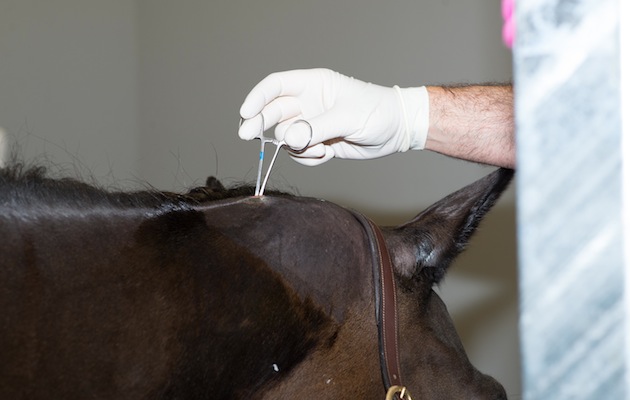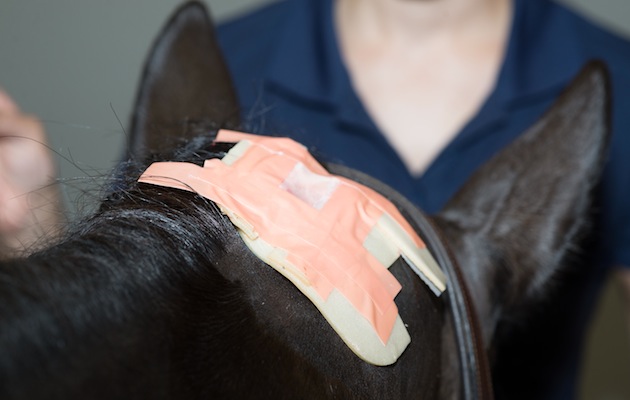The owner of a horse who would have been put down had her poll evil not been cured has praised the vet who saved her – using maggots.
Annika Elg’s mare Evita had been treated in a number of ways for the infected area in her neck but with no success.
British-trained vet Dylan Gorvy, who is based in Sweden where Annika lives, explained it is difficult to treat the condition as it is an infection of the bursa, the fluid-filled sac, which is in a hard-to-reach position underneath the main ligament in the neck.
Techniques such as flushing the area under anaesthesia and using antibiotics, and using formalin, each seemed to work for a month or so but the infection returned on both occasions.
So Dr Gorvy tried a more old-fashioned treatment.

“We were getting to the end of the road,” he told H&H.
“Annika loves this horse, the bloodlines have been part of her family for years and she wanted to do everything she could.
“I had used maggot treatment before, for cases of canker in the foot [pictured below]where nothing else seemed to reach the infection.”

Dr Gorvy ordered the maggots from a company in Wales. The 1mm larvae arrived 24 hours later and were put into the infected area using a syringe.
The area was bandaged over and the maggots left in place for three to four days.
“Then you flush them all out, clean the area really well and hope the infection’s under control,” he said.
“In Evita’s case, it worked and for the last year and a half she’s had no problem – and she had a foal last spring; they’re doing really well.”
Dr Gorvy explained the maggots do not “eat” the diseased and infected tissue, but release enzymes which break it down, and “turn it into maggot soup”, without touching healthy cells.
“The maggots are used as mini surgeons,” he added.
“They break down all the dead tissue, you take it away and clean it and the wound can heal, but they also have an anti-bacterial effect, as they create an acid environment, and have a direct effect on stimulating wound healing. It’s very beneficial.”

Dr Gorvy said he will now use maggot therapy as a first choice rather than a last resort to treat poll evil, not only as it is so effective but as he is concerned about developing resistance to antibiotics, in animals and humans.
Annika told H&H: “Every time I went away [from the vet’s] I thought this is probably the last.
“I asked Dylan and he answered ‘I hate people giving up’. He got involved and supported all the time, always responded and always positive.
“When Dylan suggested maggots I had heard that it is used in human health care, and it felt like a last chance.
“Now I am forever grateful and best of all, Evita became mother to a foal last spring.”

Using maggots to help heal horses’ wounds
Vets in France and Mali have recently reported

Lice-ridden pony found ‘eaten alive’ by maggots *warning: graphic images*
A World Horse Welfare officer described it as

Meet Madge: the pony who recovered from a maggot-infested tether wound
'Neglect on this level is something no animal
Dr Gorvy said Evita’s recovery was “incredibly gratifying”.
“You get a huge amount of satisfaction from a case like this,” he said. “I think all us horse people are slightly mad and we work long hours but it’s because we love horse and want to do the best we can for them.”




